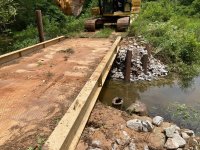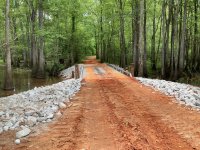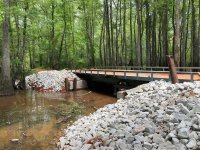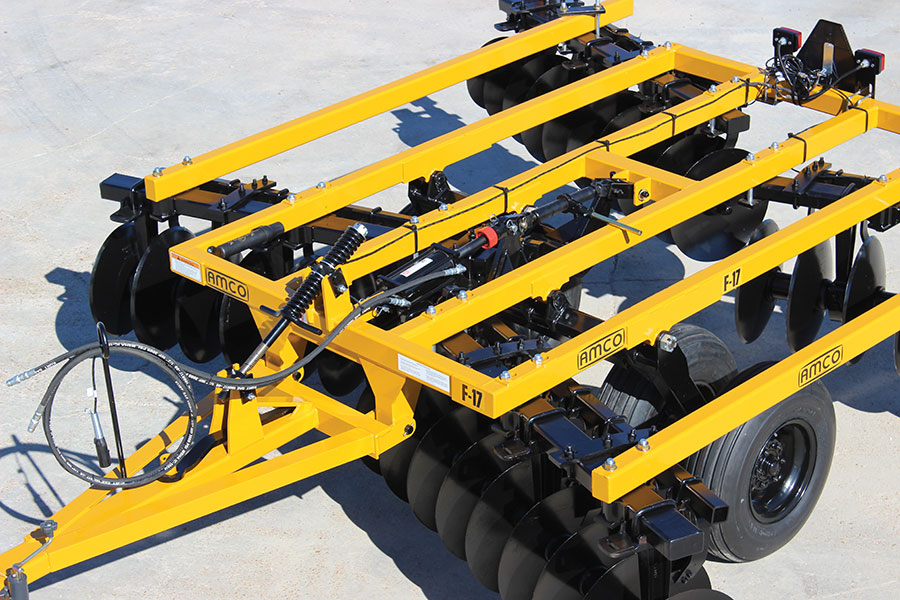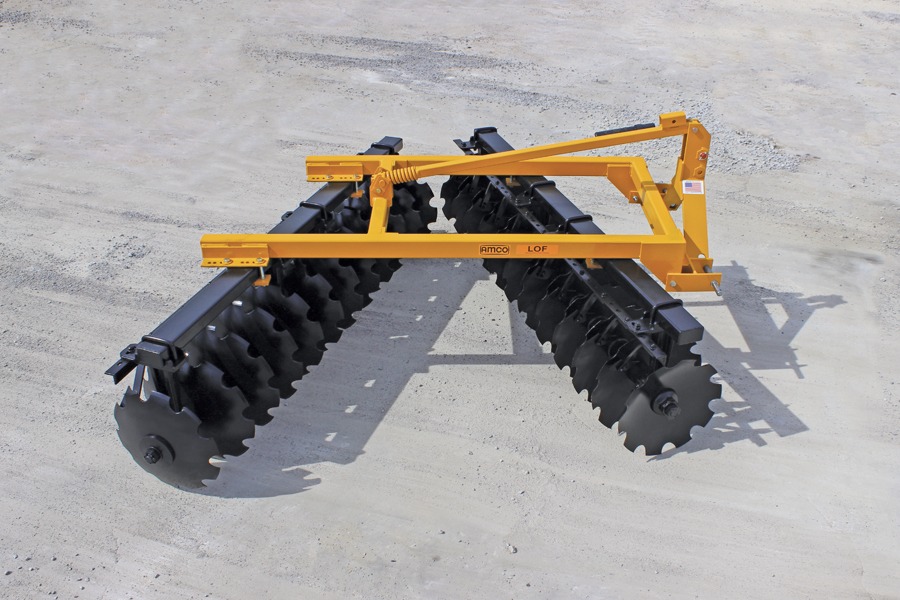OP
Longleaf man
New member
- Joined
- Jun 29, 2025
- Messages
- 10
- Tractor
- None
Thanks for the update. To insert a smaller pic, bring up your picture
Hold Shift, Wnidows key, Letter S
Select the area you want to copy
That puts it in your clipboard
Right click Paste
Smaller pic inserted
Thanks this is very helpful. I think I can hire a dozer to work on the steepest roads to create water bars to help with erosion. Do you have any experience with Rome Equipment? They make heavy duty disks and box scrapers here in Ga. Do you think I could get by with 1 offset disk, (no more than 5 feet wide) and 1 box scraper to start with? The spaces around the tree parcels are about 20-30 feet in width. Easy to get around and yes we either till with a disk or scrape the combustible vegetation with a dozer blade. We do not mow between the planted pines because they block out the sunshine preventing weeds and grasses from growing. I forgot to mention the damage done to the roads by tree harvesting. After being cut and delimbed the trees are hauled off by tractor trailers. Full loaded they can weigh over 60,000 pounds. Skidders are just about as bad. The harvesting companies are required by contract to repair the roads after they are finished but they often "forget" this part of the job.@Longleaf man thanks for coming back. I did maintenance for a few years on a 2000 acre woodlot in the Arkansas delta. I did not do any of the harvesting or thinning as that was hired out. The land was flat and it looks like your trees are mature. The soil was a clay silt so it did not turn as hard as your red clay. We did not have steep hills, but the levys were 10' tall in places and damn steep. My experiences might not apply 100% but there are lots of parallels.
I have a few questions:
- what is your budget?
- How wide are your fire breaks
Fire Break Maintenance
Do you have to take the firebreaks down to earth or just keep them mowed short? I know you have historically disc'd them, however in my opinion mowing is better as it is easier to drive on and reduces soil loss. Our firebreaks were 30' in width. In AR we were allowed to just mow them. I used a 15' batwing and a 7' single spindle rotary cutter on a 110 hp 4wd tractor. If doing maintenance on younger trees I would use a 45 hp open station compact to mow between the rows as the limbs prevented me from using a cab. If we needed to take the fire breaks down to soil I would use a medium or heavy duty tandem disc. We had some 12' tandem discs that once had wings that we removed. This gave us a nice strong small disc. I also did not mow with the loader on.
My experience is that these are primary tillage and used for prepping the ground for planting trees. You will have significant soil loss and make it soft (and muddy) if using this on fire breaks. Deep tillage loosens the soil making it a muddy mess with rain. Also the deeper tillage can hurt the tree roots. Your goal with a dirt fire break is to remove the fuel from the surface, so go with a tandem disc, it will remove the fuel, and require a smaller tractor. Big tractors in the woods are not fun to run. We never took the 250 hp or 400 hp tractors in the woods for this reason.
offset disc
View attachment 3739023
Tandem Disc
View attachment 3739187
Road Maintenance
There a few implements that are great for smoothing the roads out. I would look at a quality landscape grader, aka land plane, aka grading scraper with scarifiers in the front to break up the heavy clay like a MK Martin LP878.
In some situations a back blade with full hydraulics could be handy for removing ridges that form on the side of the road and pulling that material back onto the road bed, and cleaning out ditches.
I would also consider a HD box blade it is nice for spreading gravel and roughing in roads. The scarifiers will do a better job of ripping dirt if it turns too hard for the land scape grader. But best of all it works great as a counterweight to keep you stable when using the loader.
I do not see were you would need to have much dozer work done if you keep up with the road maintenance. If you can elevate the roads and keep the water off your winning 3/4's of the battle. Any time we found a pothole on a road we would address it immediately as it will grow quickly if ignored. Since most of our roads were on top of levy's it could lead to a washout. Then we had to use the dozers and excavators to repair the 4-10' tall levy.
We had dozers, excavators, backhoes, skidsteers, larger and smaller tractors, but all the mowing was done with two tractors. We used the dozers and excavators to maintain the levys so we could hold water for moist soil units.
Equipment Suggestions
I would look at buying two tractors, a 90-120 hp 4wd utility tractor with a cab and loader. One factor is that cab roofs are really weak on modern tractors (kubota) so that would be one of my deciding factors. I would then buy a 40-50 hp 4wd open station compact tractor with a loader to work in the rows, and they are handy as you can easily maneuver them sideways in a fire break.
For implements I would buy
- 8' land plane (6k new)
- 8' back blade with offset and tilt (2k used 7k new)
- 7-8' hd box blade with scarifiers (just as wide as the cabbed tractor) (2k used 7k new)
- Grapple for loader (3-4k new)
- 12' tandem disc or 15' batwing (used)
- 7' HD single spindle rotary cutter (4-8k)
- small chainsaw to keep on tractor.
Once you get doing the tasks you will discover what else you need. I would start basic, then add equipment that I see neccessary. You will break some glass in a cab, it happens as cabs are not great in woods. However in Georgia heat I would not be without a cab. My suggestions are based off my experiences doing what you described for maintenance in similar geography (mowing instead of discing though).
I am thinking that if the red clay gets hard I can loosen the clay with the disk and then smooth things out with the road leveler or box scraper? Does this sound feasible?
